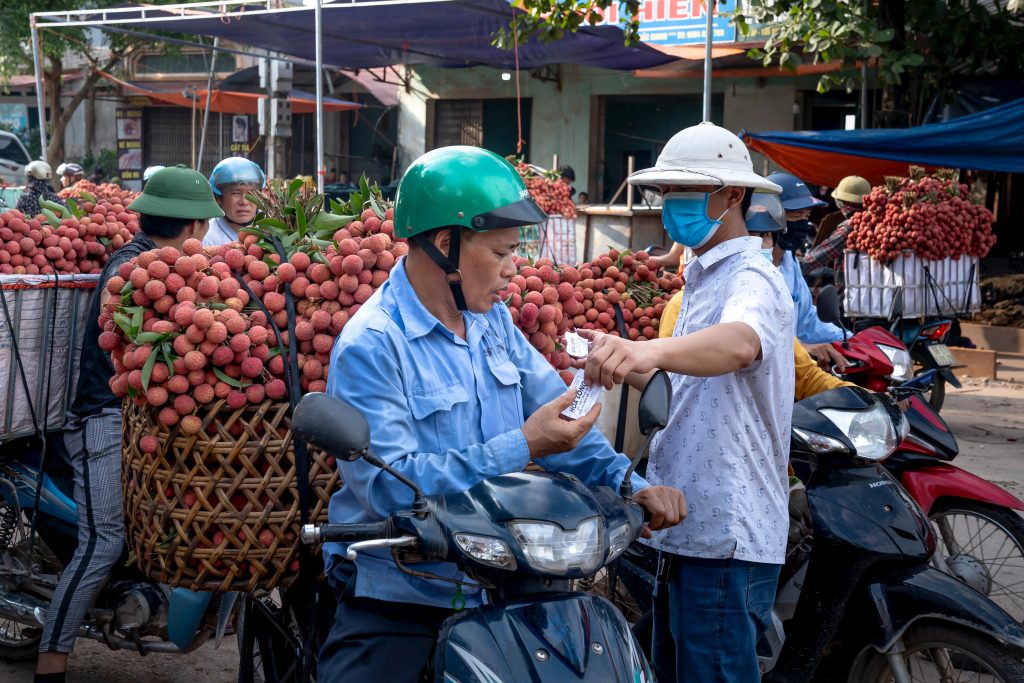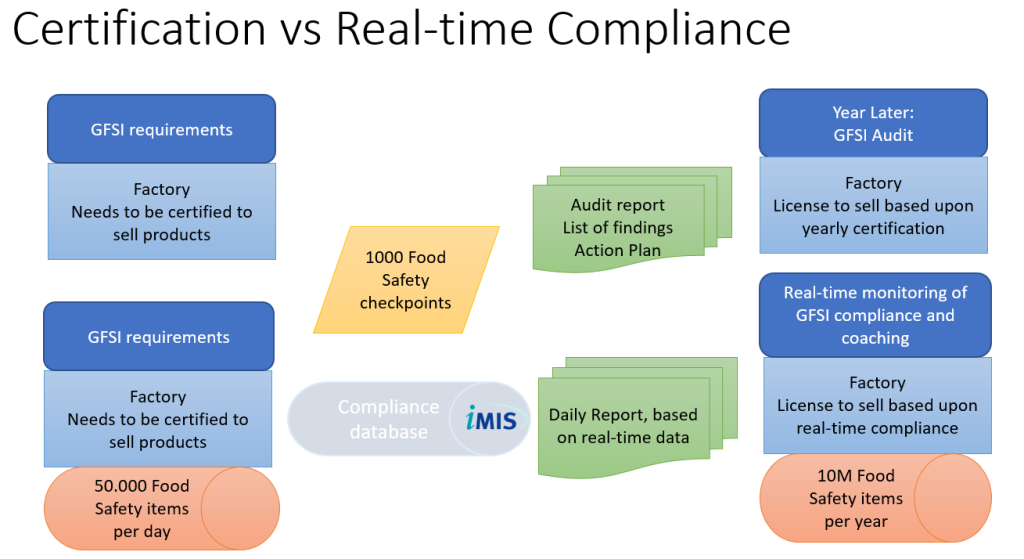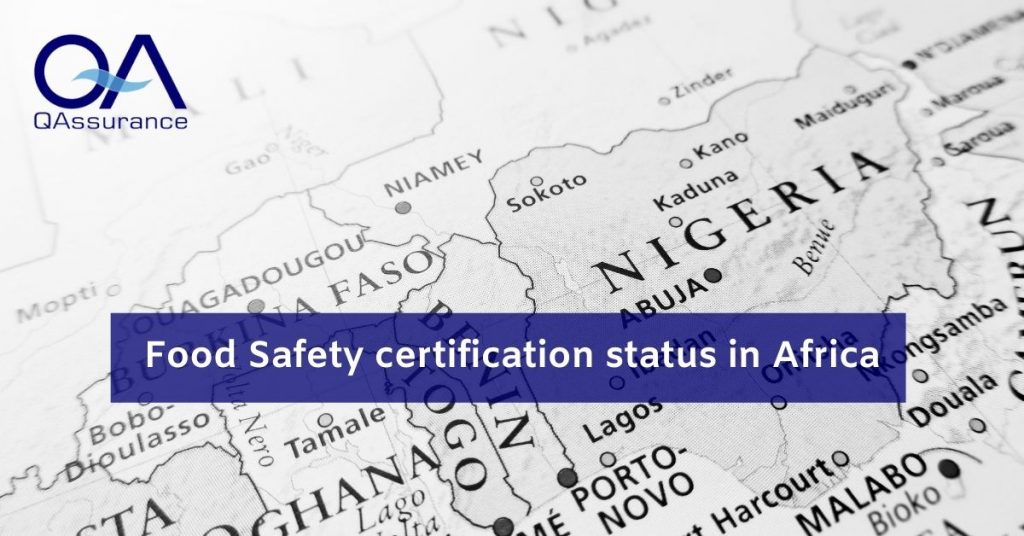Introduction
Food preservation has been a challenge from the earliest days. Early humans ingeniously discovered that drying and salting techniques could prevent their food from spoiling. The pursuit of longer-lasting food has led to the discovery of numerous ingredients, known as food additives. While these additives play a crucial role in preserving food, their safety and use are topics of ongoing discussion in the food industry.
This summary article, based on the scientific findings of the latest Toolkit from the Institute of Food Technologists (IFT) about food additives, aims to shed light on the use of additives and preservatives in food production.
Definition of food additives
The broad term “food additives” encompasses any substance intentionally introduced or unintentionally finding its way into food during its journey from farm to table [3]. According to the IFT, food additives can be categorized in two groups:
- Direct additives are added to food to deliver specific functions: thickening, sweetening, colouring, etc. They can be natural or synthetic [1]. Examples of direct additives are vitamin C, lycopene, gums, etc. Figure 1 shows the most consumed direct additives in 2020 classified by function.
- Indirect additives play a role in large-scale production and unintentionally end up in food. Examples are lubricants for machines, sealants for packaging, or protective coatings for processing equipment [3].
-> Direct or indirect, food additives play a significant role in our modern food chain [3][4].

Benefits of food additives
Food additives, making up less than 2% of what we eat, play a big role in our modern food supply [4]. These small but mighty ingredients keep food fresh, enhance taste and texture, and even boost nutrition – all contributing to a safer, more affordable, and accessible food system with less waste [3]. Furthermore, food additives are lifesavers in case of emergencies and in preventing food insecurity. Additives help stabilize food to reach those in need during disasters or conflicts. The following sub-chapters will better address all benefits of food additives [3].
Impact of disasters on food security
Food safety
Food additives are silent guardians of our food supply as they keep our food safer by delaying spoilage and, therefore, preventing pathogens from growing in food products [3]. Furthermore, many approved additives boast a long history of safe use, with no negative effects identified for over 50-60 years [3]. Innovative ways to use food additives to improve food safety include:
- Acidifiers keep food safe by controlling its acidity. Lowing the pH stops harmful microbes from growing, especially in products like sugar-free juices and packaged fruits.
- Microbial preservatives can be of natural or synthetic origin and inhibit microbial growth in both food and beverages. Potassium sorbate and sodium lactate are examples of food additives which serve as microbial inhibitors.
Other functions and benefits of food additives
Beyond safety, food additives offer a surprising range of benefits. The IFT highlights how they can contribute to [3]:
- Form and Function: Food additives keep food fresher longer. They can improve texture, colour, and flavour, and even stop potatoes from sprouting
- Shelf Life and Convenience: Food additives like thickeners and antioxidants help in keeping food fresh and convenient. This allows for fewer grocery trips and less waste.
- Fortified foods: Food additives like vitamins and minerals (for example Vitamin D in milk) can improve public health, especially where deficiencies are common.
Concerns related to food additives
While food additives play a crucial role in keeping our food supply safe, affordable, and delicious, concerns linger about their potential impact on human health. According to the IFT report, these concerns are:
- Public Health -> Balancing benefits with risks remains a top priority. Ongoing research is crucial to ensure food additives remain safe for consumers.
- Varying Regulations Globally -> Global food safety rules differ for additives, despite similar science. This is because countries consider factors like how much people typically eat and how the additive is used. This inconsistency can confuse consumers and raise safety concerns
- Chemical Sounding Names -> Food labels use confusing scientific terms (think of “thiamine” instead of “vitamin B1”) and regional differences leave consumers confused. Clearer labels with common names and purposes would be a big improvement.
- Emerging Science -> Exciting advancements like nanotechnology raise safety concerns. More sensitive tests reveal previously undetectable additives, requiring reevaluation and consumer education.
Consumers perception
Psychological, personal, and product factors all influence consumer acceptance of additives [2]. This growing desire for ingredient transparency fuels a particular wariness towards synthetics in food. Consequently, natural additives gain favour, even with shorter shelf-life and higher cost, despite regulatory bodies assuring their safety. However, the desire for convenience and healthy options is driving a different trend. Consumers are increasingly seeking out sugar replacements, probiotics, protein powders, and other additives that offer both health benefits and ease of use [3].
According to a survey by the German Federal Institute for Risk Assessment (BfR) [2]:
- 55% avoid additives: Flavor enhancers, sweeteners, and dyes (top of the list)
- Concerns: Consumers worry about intolerances, cancer, obesity, diabetes, and heart disease
- 47% seek additives: Vitamins are a popular choice
-> By understanding what shapes consumer perception of food additives, clearer communication and informed choices can be made [2] .
Legislation
Food additive legislation differs by country, it is, therefore, important to check the relevant agency for approval status. Overall [3]:
- The UN's Codex Alimentarius offers a global starting point for approved food additives.
- New food ingredients and additives face country-specific approvals, with safety thresholds set by rigorous studies.
- The US (FDA) and EU (EFSA) have strict approval processes for new food additives. Safety assessments consider the intended use and amount of each product.
- Unlike direct additives, indirect ones (like packaging materials) have different global regulations and often aren't listed on labels.
IMIS Food – Real-time Food Safety Platform
Since 2006, QAssurance has been a leader in food safety solutions. The iMIS Food platform empowers food businesses to manage their compliance. Validated over 1000 times, iMIS Food helps companies meet EU regulations and global standards like IFS, BRC, and FSSC22000. With its built-in quality management system and Deming cycle approach for continuous improvement, iMIS Food keeps companies on top of food safety issues and future-proofs their operations.
iMIS Food platform for food safety
iMIS Food SpecCheck
Avoid costly recalls and ensure regulatory compliance with iMIS Food's innovative labelling and specification management tool: iMIS Food SpecCheck.
This integrated system aligns seamlessly with your existing workflows, giving you complete control over end-product specifications – from raw materials to the finished product label. It ensures accurate ingredient declarations, nutritional values, and allergen information, with an approval process guaranteeing a perfect match between label and specification.
iMIS Food SpecCheck Specifications and labeling
Conclusion
According to the IFT Toolkit, this should be kept in mind about food additives:
- Scientific innovation and consumers' need for “clearer” labels have driven reformulation.
- Clearer labels might be attractive to consumers, but they could pose food safety issues.
- As public health priorities change, reevaluating food additives is crucial to manage potential risks.
Sources
- [1] European Food Safety Authority. (2024, March 19). Foodadditives. https://www.efsa.europa.eu/en/topics/topic/food-additives
- [2] German Federal Insitute for Risk Assessment. (2021). Colourful, extended shelf life, and flavourful – What does the population think about food additives? – BfR. https://www.bfr.bund.de/en/press_information/2021/38/colourful__extended_shelf_life__and_flavourful___what_does_the_population_think_about_food_additives_-282507.html#:~:text=A%20current%2C%20representative%20survey%20by,says%20BfR%20President%20Professor%20Dr.
- [3] Institute of Food Technologists. (2024). FoodAdditives. In IFT. https://www.ift.org/news-and-publications/by-topic/food-ingredients-additives?q=&page=1
- [4] Sharing insights elevates their impact. (n.d.). S&P Global. https://www.spglobal.com/commodityinsights/en/ci/products/chemical-food-additives-scup.html
Related articles to The Truth about Food Additives - Facts vs Fiction
Many customers and visitors to this page 'The Truth about Food Additives - Facts vs Fiction' also viewed the articles and manuals listed below:



